Introduction
Stir-fried pork hocks, known in Chinese cuisine as 炒蹄膀 (chǎo tíbǎng), is a dish that epitomizes the richness and depth of traditional home-cooked meals. Rooted in Chinese culinary heritage, this dish transforms a humble cut of meat—the pork hock—into a tender, flavorful masterpiece. The process involves a delicate balance of marinating, braising, and stir-frying, resulting in a harmonious blend of savory, sweet, and aromatic notes. Whether served at family gatherings, banquets, or casual dinners, 炒蹄膀 is celebrated for its ability to satisfy both the palate and the soul. This article will guide you through every step of preparing this iconic dish, from selecting the finest ingredients to mastering the cooking techniques that ensure perfection.
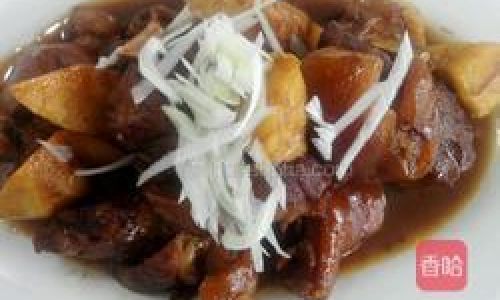
Understanding the Ingredients
To create an authentic 炒蹄膀, you must begin with quality ingredients. Each component plays a pivotal role in building layers of flavor and texture.
-
Pork Hocks: The star of the dish, pork hocks (also called pig’s trotters) are the joints connecting the pig’s foot to the leg. They are rich in collagen, which, when cooked properly, melts into a silky, gelatinous texture. Opt for fresh, skin-on hocks with a healthy pink hue. Avoid those with a strong odor or discoloration.
-
Aromatics: Garlic, ginger, and scallions form the aromatic foundation. Garlic adds pungency, ginger imparts a subtle warmth, and scallions contribute freshness.
-
Spices and Seasonings: Star anise, cinnamon sticks, Sichuan peppercorns, and dried chilies (optional) elevate the dish with their complex, earthy flavors. These spices should be toasted lightly before use to release their essential oils.
-
Sauce Base: A mixture of light soy sauce, dark soy sauce (for color), oyster sauce, rice wine (Shaoxing wine preferred), and a touch of sugar balances the dish’s savory profile.
-
Thickening Agents: Cornstarch or potato starch, mixed with water, helps thicken the sauce to a glossy consistency that clings to the meat.
-
Oil: Use a neutral oil like vegetable or peanut oil for stir-frying, as it withstands high heat without imparting unwanted flavors.
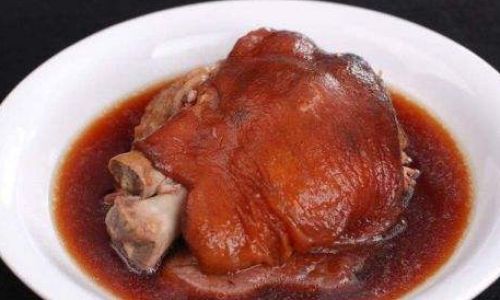
Preparation: The Key to Tender Perfection
The journey to a memorable 炒蹄膀 begins with meticulous preparation.
-
Cleaning and Parboiling:
- Rinse the pork hocks under cold water to remove any surface impurities.
- Fill a large pot with water, add a few slices of ginger and a handful of scallions, and bring to a boil.
- Submerge the hocks in the boiling water for 5–7 minutes. This step, known as parboiling, eliminates blood residue and reduces gamey flavors.
- Drain the hocks and rinse them under cold water again. Pat dry with paper towels.
-
Cutting the Meat:
- Using a sharp cleaver or knife, chop the hocks into 2-inch chunks. Ensure uniformity in size to guarantee even cooking.
- Trim excess fat if desired, but retain some for added flavor.
-
Marinating:
- In a large bowl, combine the pork chunks with minced garlic, grated ginger, light soy sauce, rice wine, and a pinch of sugar.
- Massage the marinade into the meat, ensuring every piece is coated.
- Cover and refrigerate for at least 2 hours, or ideally overnight, to tenderize and infuse the meat with flavor.
Cooking Techniques: From Braising to Stir-Frying
The cooking process is divided into two phases: braising to tenderize the meat and stir-frying to caramelize its exterior.
-
Braising the Pork Hocks:
- Heat a wok or Dutch oven over medium heat and add a tablespoon of oil.
- Add the marinated pork hocks and sear until lightly browned on all sides. This step seals in juices and enhances texture.
- Toss in the star anise, cinnamon sticks, Sichuan peppercorns, and dried chilies (if using). Stir-fry for 1–2 minutes until fragrant.
- Pour in enough water or chicken stock to submerge the meat halfway. Bring to a simmer, then reduce heat to low.
- Cover and braise for 1.5–2 hours, or until the meat is tender enough to pierce with a fork. Check occasionally to ensure the liquid doesn’t evaporate completely.
-
Thickening the Sauce:
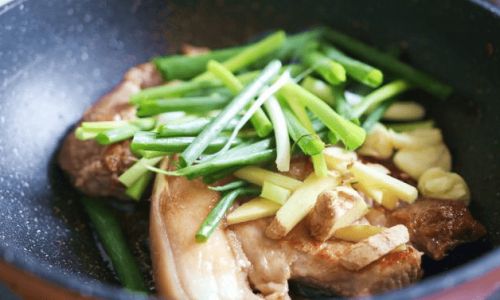
- Once the meat is tender, increase the heat to medium-high.
- In a small bowl, mix 1 tablespoon of cornstarch with 2 tablespoons of water to create a slurry.
- Gradually stir the slurry into the braising liquid, allowing the sauce to thicken to a syrupy consistency.
- Adjust seasoning with soy sauce or sugar as needed.
-
Stir-Frying for Caramelization:
- Heat a separate wok over high heat and add a tablespoon of oil.
- Add the braised pork hocks, reserving the thickened sauce.
- Stir-fry vigorously for 3–4 minutes until the meat develops a golden-brown crust.
- Pour the reserved sauce over the meat and toss to coat evenly.
- Add chopped scallions and a drizzle of sesame oil for garnish.
Serving Suggestions and Pairings
炒蹄膀 is a versatile dish that complements a variety of accompaniments:
- Steamed Rice: The tender meat and rich sauce pair perfectly with fluffy white rice, creating a comforting meal.
- Noodles: Serve over hand-pulled noodles or egg noodles for a hearty noodle dish.
- Vegetables: Balance the richness with stir-fried greens like bok choy or gai lan.
- Banquet Setting: Include it as part of a multi-course Chinese feast, alongside dishes like mapo tofu, Kung Pao chicken, and spring rolls.
Regional Variations and Creative Twists
While the classic recipe is beloved, regional adaptations and modern twists offer exciting possibilities:
- Spicy Sichuan-Style: Amplify the heat with doubanjiang (fermented chili bean paste) and fresh red chilies.
- Sweet and Savory: Add a touch of hoisin sauce or rock sugar for a caramelized glaze.
- Vegetable-Infused: Incorporate mushrooms, bamboo shoots, or water chestnuts during the braising phase.
- Pressure Cooker Method: Shorten braising time by using a pressure cooker (20–25 minutes on high pressure).
Troubleshooting and Expert Tips
- Tough Meat: If the hocks remain chewy, extend the braising time or use a pressure cooker.
- Bland Flavor: Ensure thorough marination and adjust seasoning during the final stir-fry.
- Oily Sauce: Skim excess fat from the braising liquid before thickening.
- Burnt Aromatics: Toast spices over low heat to prevent scorching.
Cultural Significance and Occasions
炒蹄膀 holds a special place in Chinese culture, often appearing during festivals, weddings, and New Year celebrations. Its gelatinous texture symbolizes prosperity and togetherness, making it a beloved centerpiece for communal meals.
Conclusion
Crafting the perfect 炒蹄膀 is a labor of love that rewards patience and precision. By mastering the art of marinating, braising, and stir-frying, you can recreate this timeless dish in your own kitchen. Whether served as a festive centerpiece or a comforting weeknight meal, its rich flavors and tender texture will leave a lasting impression. So, gather your ingredients, embrace the process, and savor the joy of sharing this culinary treasure with loved ones.
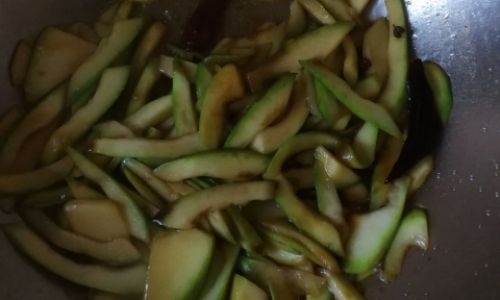
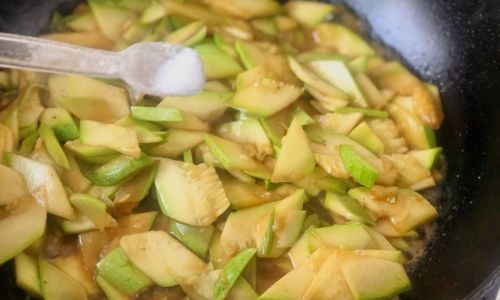


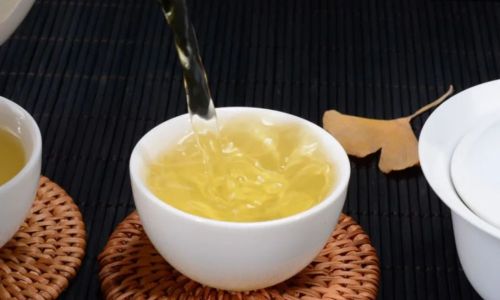
0 comments